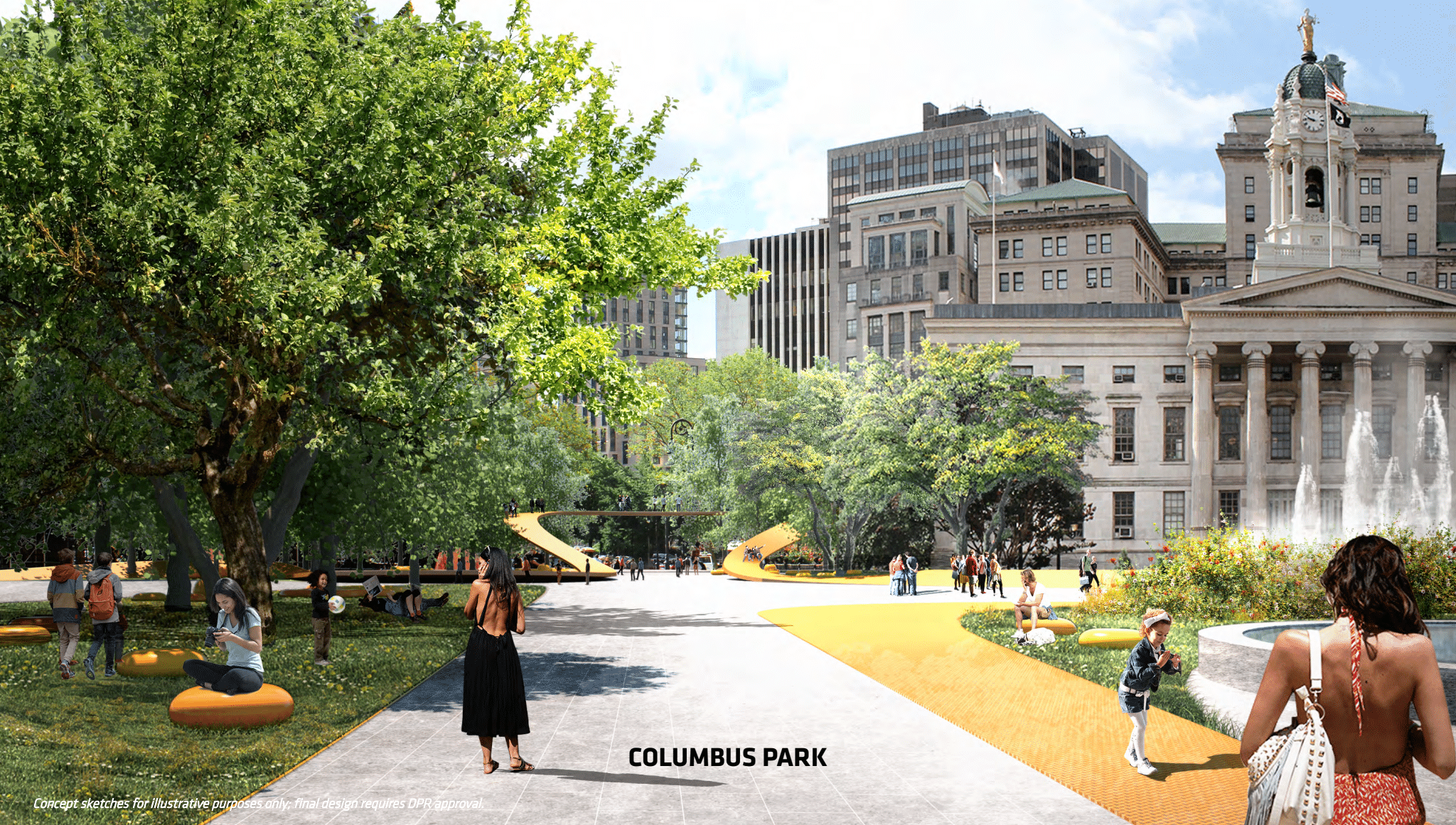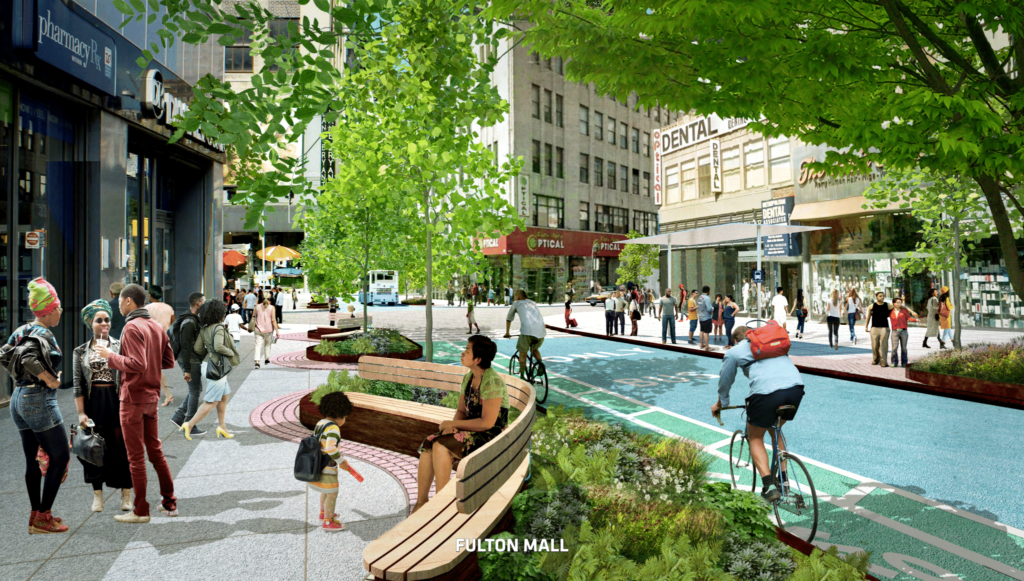Downtown Brooklyn Partnership unveils plan to transform public realm over next decade

On Thursday, Downtown Brooklyn Partnership (DBP) unveiled the Downtown Brooklyn Public Realm Plan, which puts forth a series of transformative measures to take Downtown Brooklyn from a traditional central business district geared to car-oriented uses to a citywide leader in reclaiming streets for greater pedestrian use and creating public spaces that prioritize people and the environment.
The specific reforms stem from DBP’s broader vision for the neighborhood, unveiled in 2019, as well as lessons learned in the past year. With an emphasis on green spaces, the plan proposes planting 1,000 new trees, implementing permanent shared streets, and creating an Adams Street greenway that connects DOT’s dedicated bike lane on the Brooklyn Bridge to an extensive Brooklyn bicycle network.

The plan was by DBP with design firms Bjarke Ingels Group (BIG Architects) and WXY architecture + urban design (WXY), and in close collaboration with NYC DOT, NYC Parks, and a 50-plus member steering committee including local resident associations, cultural organizations, educational institutions, businesses, property owners and houses of worship.

Brooklyn Boro
View MoreNew York City’s most populous borough, Brooklyn, is home to nearly 2.6 million residents. If Brooklyn were an independent city it would be the fourth largest city in the United States. While Brooklyn has become the epitome of ‘cool and hip’ in recent years, for those that were born here, raised families here and improved communities over the years, Brooklyn has never been ‘uncool’.